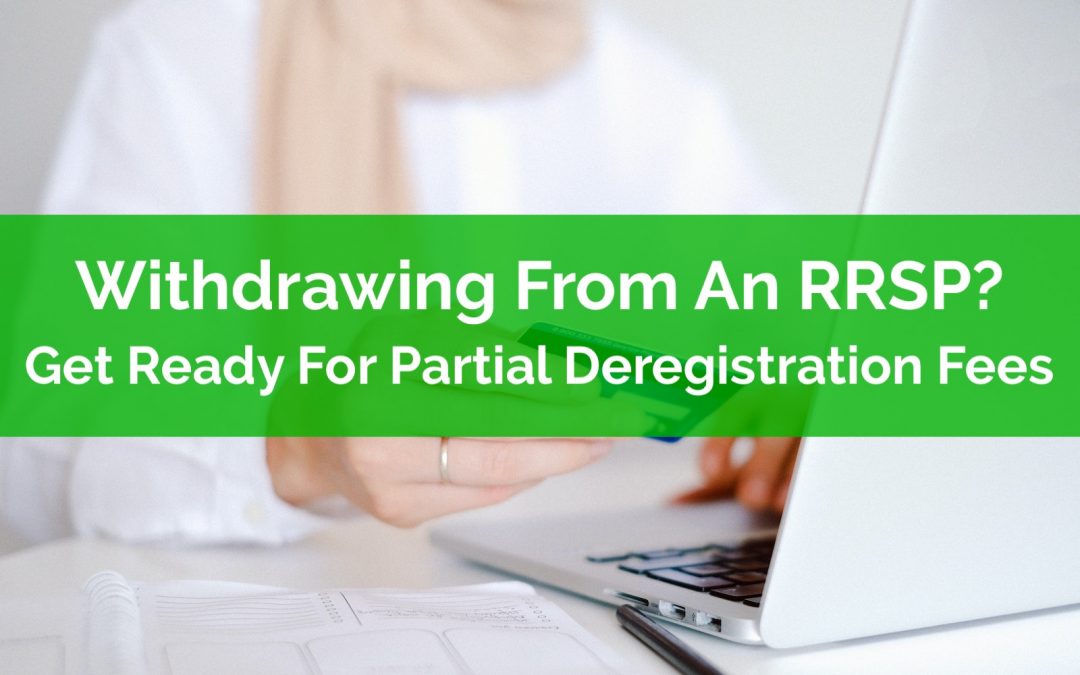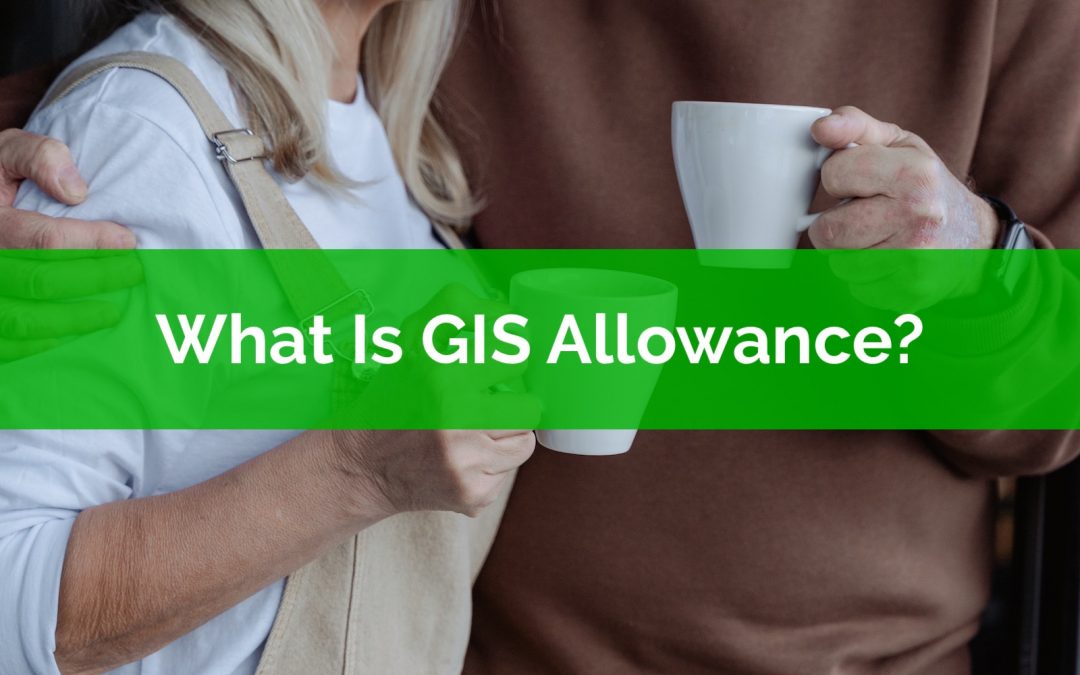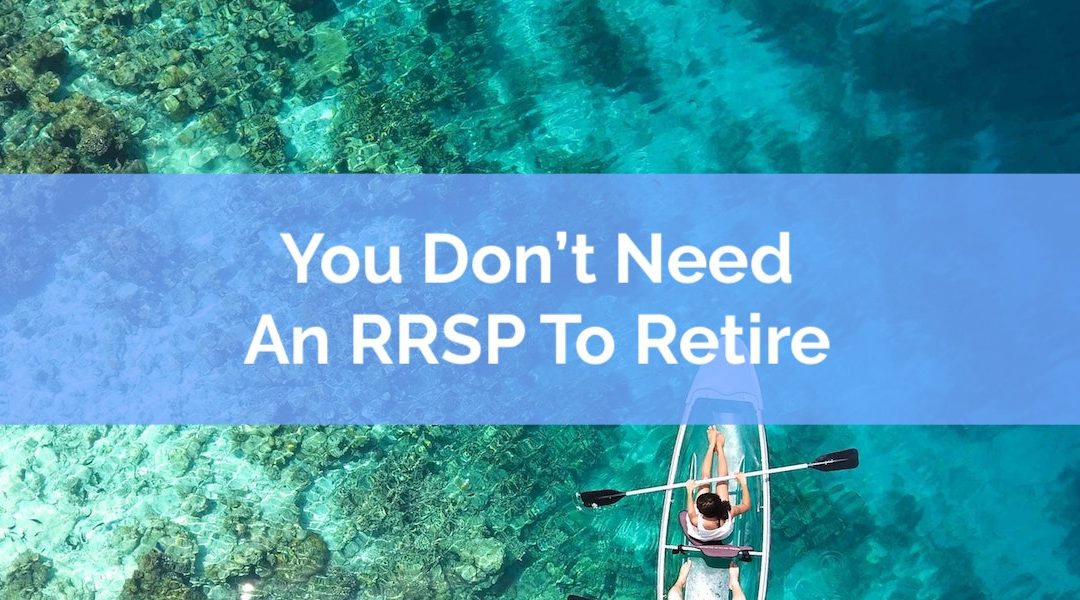“Welcome to the PlanEasy blog! We make personal finance easy.
Thanks for visiting.”
– Owen

Withdrawing From An RRSP? Get Ready For Partial Deregistration Fees
For those in the accumulation phase of their financial plan, withdrawals are not even on the radar yet, they’re entirely focused on contributions.
But for those getting close to retirement and the decumulation phase, their mindset starts to shift from contributions to withdrawals. They’ve been adding to these accounts for so long that they’re probably now wondering “how do I get my money out?”.
One unexpected realization people often have as they enter the decumulation phase is that it costs money to withdraw from an RRSP, sometimes a lot of money.
That’s right, withdrawing from an RRSP costs money. There is typically a fee charged on every RRSP withdrawal. These RRSP withdrawal fees are called “partial deregistration fees” and they can range anywhere from $50 to $100+ depending on the financial institution.
Finding out about these partial deregistration fees is a shock for those entering early retirement and for those who aren’t aware that these fees exist… or how to avoid them.

What Is GIS Allowance?
GIS Allowance is one of those unique government benefits. It applies only in very specific situations, but when it does apply, it can be very large.
GIS stands for the Guaranteed Income Supplement and it’s a government benefit for low- and moderate-income retirees. It is available after the age of 65 if OAS benefits have begun and if taxable income (line 23600 on your tax return) is below a certain threshold.
Allowance is another government benefit tied to GIS. Allowance is only available in very specific situations but it’s worth over $1,200 per month or $14,000 per year!
Given the size of GIS Allowance it can be very beneficial to understand how it works and when it applies. But, because it’s so rare, its often not considered when creating a retirement drawdown strategy. Unfortunately, not adjusting a financial plan for GIS Allowance will make retirement unnecessarily difficult for lower-income couples.
GIS Allowance is a government benefit that applies in only a few situations, but it is a benefit that is extremely large, and therefore it’s important to understand if and when you may qualify.

You Don’t Need An RRSP To Retire
When it comes to retirement there is a lot of focus put on the RRSP. The Registered Retirement Savings Plan seems like an obvious choice for retirement (it even has retirement in the name after all!). But for many of us an RRSP isn’t necessary, and it might even be counterproductive!
There’s a new retirement account on the block and it’s called the TFSA. Just over 10 years old, the TFSA is relatively new to the retirement savings game. Starting in 2009, it changed the way we look at retirement savings.
If you’re new to RRSP vs TFSA debate, it’s important to know that there are pros and cons for each account. RRSP’s do have the advantage in a few different areas, especially if you have high income or have a family and receive child benefits (either the Canada Child Benefit or a provincial child benefit). TFSA’s also have their share of benefits too. For low- and middle-income households, the TFSA has a few big advantages.
When deciding which is the right one for you need to look at multiple factors. Factors like income taxes, government benefits, creditor protection, and even human behaviour.
When deciding between the TFSA or the RRSP the key thing to remember is that you don’t actually NEED an RRSP to retire. Someone can easily retire with only a TFSA.
There are four things you need to know if you’re going to avoid the RRSP and only use the TFSA for retirement…

Owen Winkelmolen
Advice-only financial planner, CFP, and founder of PlanEasy.ca
“Welcome to the PlanEasy blog! We make personal finance easy.
Thanks for visiting.”
– Owen
New blog posts weekly!
Tax planning, benefit optimization, budgeting, family planning, retirement planning and more...

Withdrawing From An RRSP? Get Ready For Partial Deregistration Fees
For those in the accumulation phase of their financial plan, withdrawals are not even on the radar yet, they’re entirely focused on contributions.
But for those getting close to retirement and the decumulation phase, their mindset starts to shift from contributions to withdrawals. They’ve been adding to these accounts for so long that they’re probably now wondering “how do I get my money out?”.
One unexpected realization people often have as they enter the decumulation phase is that it costs money to withdraw from an RRSP, sometimes a lot of money.
That’s right, withdrawing from an RRSP costs money. There is typically a fee charged on every RRSP withdrawal. These RRSP withdrawal fees are called “partial deregistration fees” and they can range anywhere from $50 to $100+ depending on the financial institution.
Finding out about these partial deregistration fees is a shock for those entering early retirement and for those who aren’t aware that these fees exist… or how to avoid them.

What Is GIS Allowance?
GIS Allowance is one of those unique government benefits. It applies only in very specific situations, but when it does apply, it can be very large.
GIS stands for the Guaranteed Income Supplement and it’s a government benefit for low- and moderate-income retirees. It is available after the age of 65 if OAS benefits have begun and if taxable income (line 23600 on your tax return) is below a certain threshold.
Allowance is another government benefit tied to GIS. Allowance is only available in very specific situations but it’s worth over $1,200 per month or $14,000 per year!
Given the size of GIS Allowance it can be very beneficial to understand how it works and when it applies. But, because it’s so rare, its often not considered when creating a retirement drawdown strategy. Unfortunately, not adjusting a financial plan for GIS Allowance will make retirement unnecessarily difficult for lower-income couples.
GIS Allowance is a government benefit that applies in only a few situations, but it is a benefit that is extremely large, and therefore it’s important to understand if and when you may qualify.

You Don’t Need An RRSP To Retire
When it comes to retirement there is a lot of focus put on the RRSP. The Registered Retirement Savings Plan seems like an obvious choice for retirement (it even has retirement in the name after all!). But for many of us an RRSP isn’t necessary, and it might even be counterproductive!
There’s a new retirement account on the block and it’s called the TFSA. Just over 10 years old, the TFSA is relatively new to the retirement savings game. Starting in 2009, it changed the way we look at retirement savings.
If you’re new to RRSP vs TFSA debate, it’s important to know that there are pros and cons for each account. RRSP’s do have the advantage in a few different areas, especially if you have high income or have a family and receive child benefits (either the Canada Child Benefit or a provincial child benefit). TFSA’s also have their share of benefits too. For low- and middle-income households, the TFSA has a few big advantages.
When deciding which is the right one for you need to look at multiple factors. Factors like income taxes, government benefits, creditor protection, and even human behaviour.
When deciding between the TFSA or the RRSP the key thing to remember is that you don’t actually NEED an RRSP to retire. Someone can easily retire with only a TFSA.
There are four things you need to know if you’re going to avoid the RRSP and only use the TFSA for retirement…
Join over 250,000 people reading PlanEasy.ca each year. New blog posts weekly!
Tax planning, benefit optimization, budgeting, family planning, retirement planning and more...
Join over 250,000 people reading PlanEasy.ca each year. New blog posts weekly!
Tax planning, benefit optimization, budgeting, family planning, retirement planning and more...
